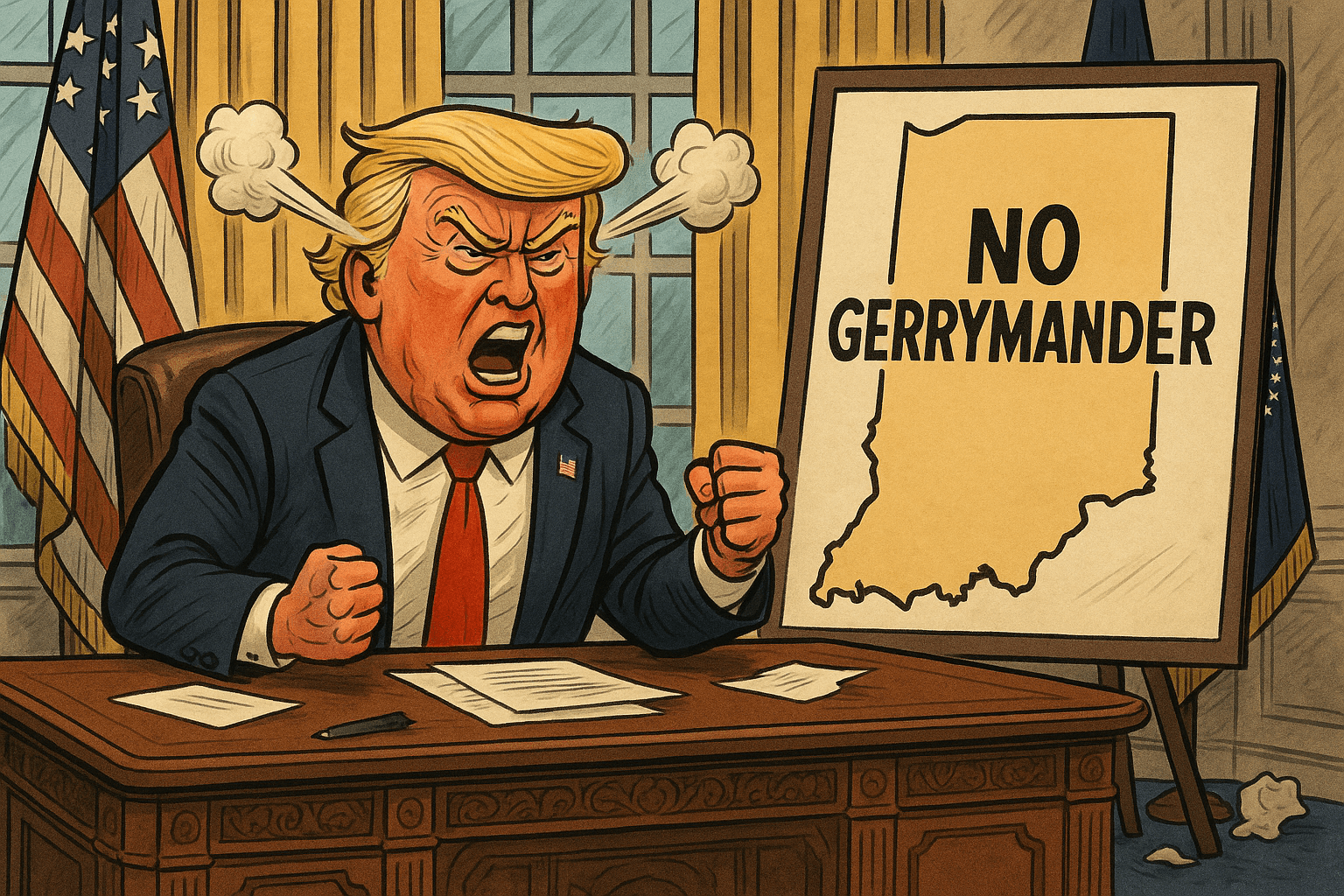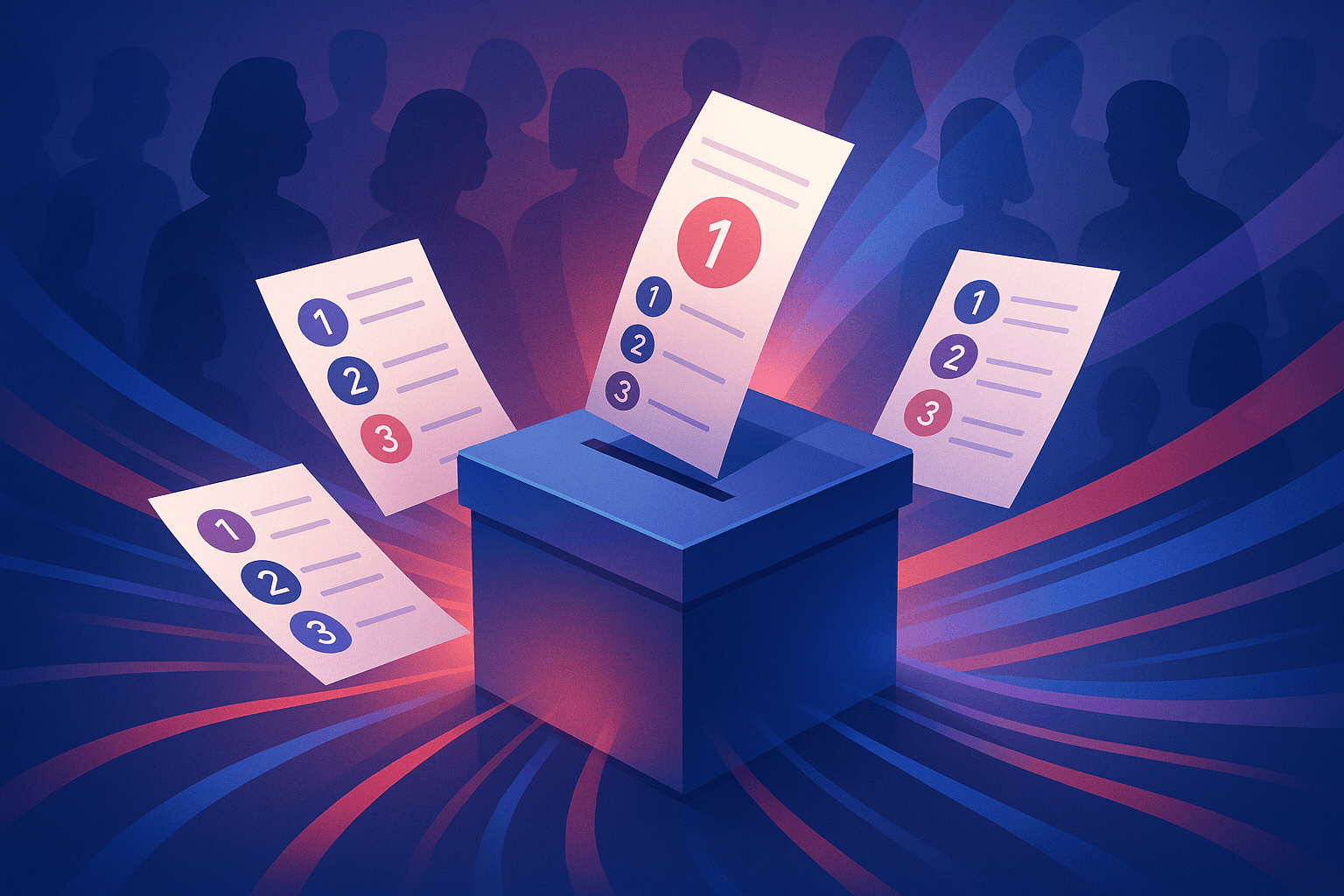NYC Mayor Eric Adams Declares Independent Bid for Re-Election to Skirt Ranked Choice Primary

NEW YORK CITY, N.Y. — Facing the risk of defeat in a competitive Democratic primary, New York City Mayor Eric Adams announced on April 3 that he is withdrawing from the June 24 ranked-choice (RCV) contest and will instead collect signatures to run as an independent in the November 4 general election.
Adams, who won the 2021 Democratic primary with 51% after multiple rounds of RCV tabulation, will now bypass that system entirely. He must now secure 3,750 valid signatures from registered voters by late May.
The mayor’s path to reelection has been complicated by a federal indictment — since dropped —that appears to have eroded both his core support and broader appeal.
THE EARLY SIGNS: NYC Mayor Eric Adams Once Benefited from Ranked Choice Voting -- Now It May Be His Undoing
Two recent polls showed him struggling to attract the second- and third-choice votes needed to advance in a RCV field. Just a week before he dropped out, a poll showed former New York Governor Andrew Cuomo leading with 39% of first-choice support and 70% after tabulating the rounds.
RCV was adopted by New York City voters in 2019 with 72% support via Ballot Question 1. It applies only to primary elections and replaced the city’s previous winner-take-all system in party primaries.
Supporters argue that running as an independent offers Adams his best path to reelection, allowing him to appeal to a broader coalition of independents, moderates, and disaffected voters across party lines.
In a three-way general election against the Democratic and Republican nominees— where RCV is not used — Adams could theoretically win reelection with a simple plurality of votes, without needing a majority.
Adams’ move somewhat echoes the path taken by former U.S. Senator Joe Lieberman in 2006, who, after losing the Democratic primary in Connecticut due to backlash over his support for the Iraq War, ran as an independent and won the general election.
Like Lieberman, Adams is now betting that circumventing a party base that has largely abandoned him could give him a second chance with a broader, more ideologically diverse general electorate.
A Closed Primary With No Room for Independents
New York’s Democratic primary is closed, meaning only registered Democrats can participate. Unlike other states that allow independents to vote in primaries, New York requires voters to change their party registration well in advance.
Adams had initially declared he would run in the primary but faced a tough road with a Democratic electorate increasingly divided over his policies. Many of the top contenders in the Democratic primary, including former New York Governor Andrew Cuomo, Speaker of the New York City Council Adrienne Adams, and former City Comptroller Scott Stringer, also have high name recognition and are running as vocal critics of his administration.
Mayor Adams' political future now hinges on support from the independent voters who are barred from the primary -- a large segment of the city's voting population that may feel scorned by city elections.
How RCV Changed the Electoral Playing Field in New York City
RCV was first implemented in the 2021 primary. Under the system, voters can rank up to 5 candidates in order of preference. If no candidate receives more than 50% of first-choice votes, the candidate with the fewest votes is eliminated and their votes are redistributed based on second choices.
The process continues until one candidate surpasses 50%. While Mayor Adams ultimately prevailed in 2021 after seven rounds of tabulation, many believe the same system would now doom his chances.
In 2025, Mayor Adams faces a more organized opposition, including The United Auto Workers Region 9A, which appears to have already run a partially successful “DREAM” campaign (as in “Don’t Rank Eric or Andrew for Mayor”). This strategy may have helped consolidate anti-Adams sentiment and would possibly have hurt him in a RCV scenario.
Some political analysts believe Cuomo entered the race precisely because RCV might favor him. Early polling showed Cuomo with strong first-choice support while also being acceptable to moderate and conservative-leaning Democrats as a second choice.
RCV and Voter Turnout
Critics of RCV have occasionally claimed it suppresses voter turnout, but data from the 2021 NYC mayoral election tells a different story. In other words, turnout increased: Nearly 1 million voters cast ballots in 2021, compared to just over 772,000 in 2013 -- a 29% improvement.
Ester Fuchs, a professor of political science at Columbia University and a vocal supporter of RCV for NYC, has emphasized that RCV is helping to address the city’s “civic engagement problem.” “Clearly, [RCV] did not make it worse, because turnout went up," Fuchs told The City.
Exit polling of more than 1,600 New York City voters conducted by Edison Research after the first RCV election showed that:
- 78% of voters said they understood RCV “extremely or very well”
- 95% found the ballot easy to complete, across all ethnic groups
Most voters said they ranked at least three candidates in 2021.
Esmerelda Simmons, civil rights attorney and director at the Center for Law and Social Justice at Medgar Evers College, said: “That’s because New Yorkers are smart, and if somebody tells them that they can have five bites of the apple, then most people will take five bites,” Simmons said.
What’s Next?
Adams’ independent bid is a vivid example of how RCV has reshaped electoral strategy in New York City. It was the very system he won in 2021, but now it could be why he’s stepping outside the Democratic primary altogether.
With no RCV in the general election, the incumbent mayor is betting that a traditional plurality system—where he can win without a majority—isn’t just his best chance, but his only viable path to staying in office.
Early voting runs from Saturday, June 14, to Sunday, June 22. Primary Day is Tuesday, June 24, 2025, with polls open from 6 a.m. to 9 p.m. The general election is Tuesday, November 4, 2025. New York City voters can find their poll sites at the NYC Board of Elections
 Cara Brown McCormick
Cara Brown McCormick






